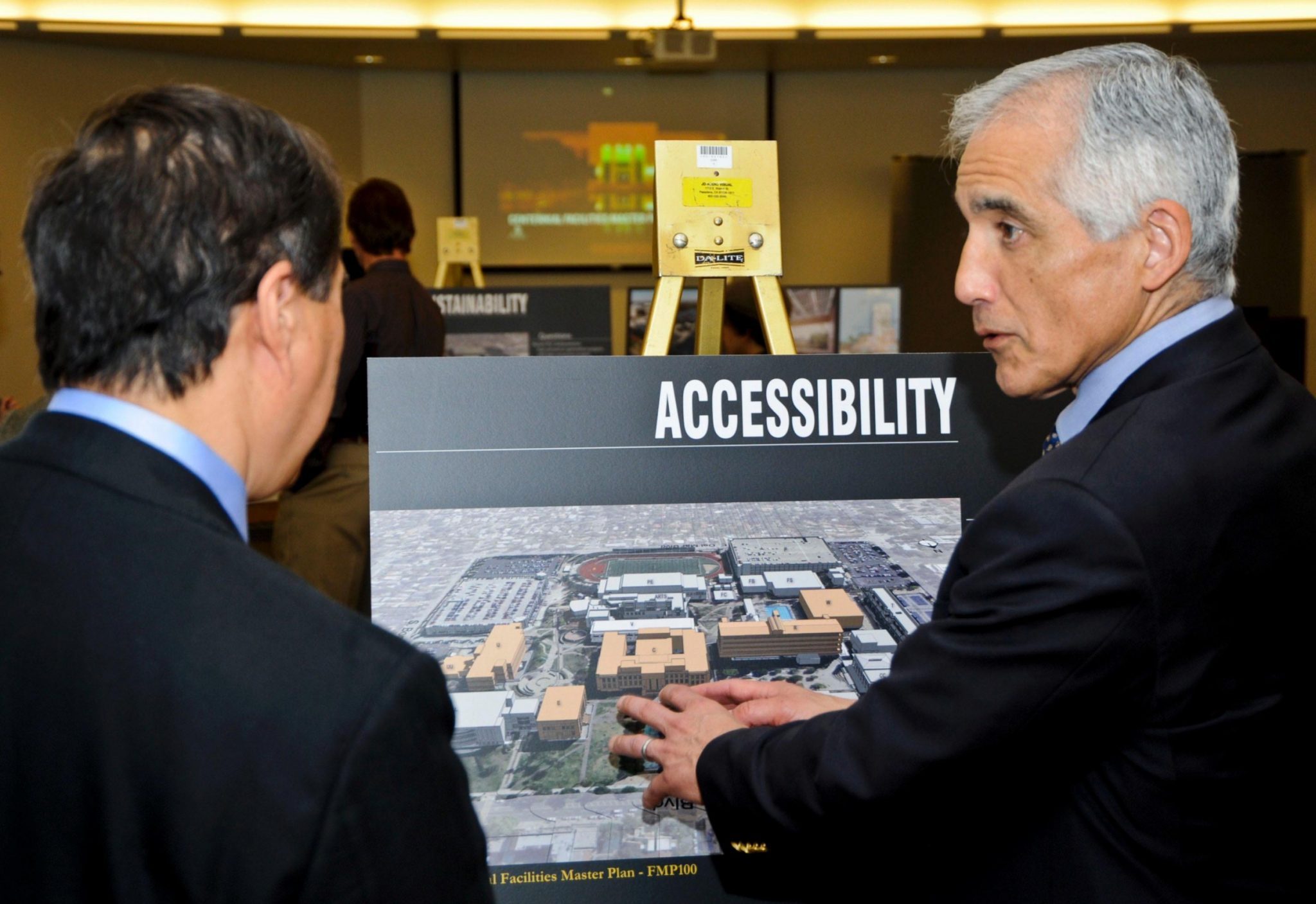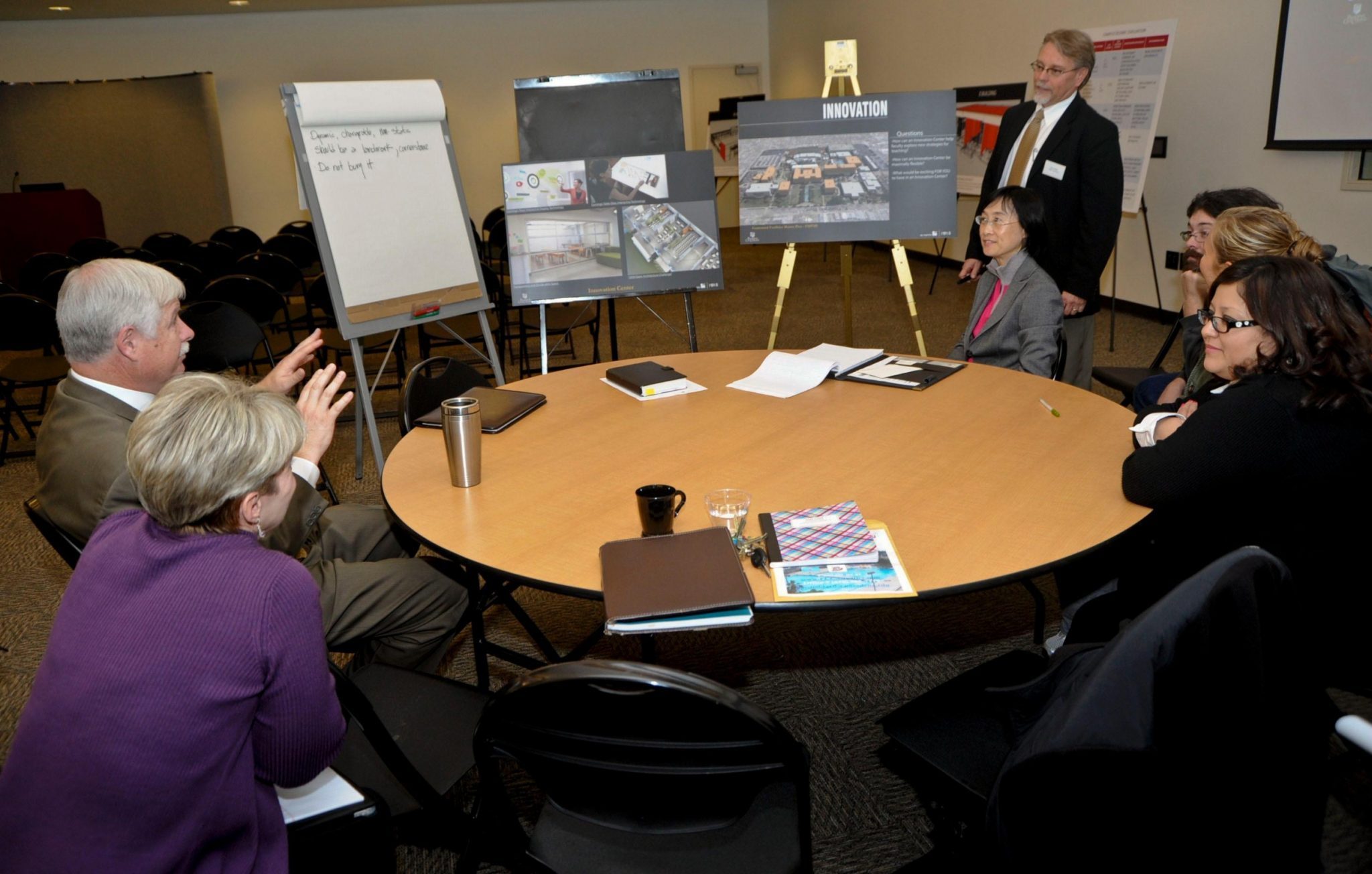Architects presented PCC’s Centennial Facilities Master Plan, the FMP100, to students and faculty on March 21. The meeting, held in the Creveling Lounge, was meant to get feedback and ideas from those that the plan would affect most. It was a “kickoff for goal setting on campus,” said Richard Thompson, chief planner on the project.
After Thompson outlined the general plan for PCC’s future development, the room broke up into round table discussions on various aspects of the undertaking.
Topics discussed were the classroom of the future, sustainability, innovation, accessibility, and the campus of the future.
“With community college being a shared governance space, it’s crucial to get student and faculty opinions,” said Thompson.
The innovation table discussed the building of a state of the art innovation center, to be located either on the site currently occupied by the W building or on the corner of Colorado Boulevard and Hill Avenue. Whatever the location, it would be a student startup incubator, modeled after Bell Labs, and MIT’s Lincoln Lab, a place where students in different disciplines can meet and work together on projects.
“The innovation center has to invite everyone in, and be a home base for new students,” said architect Otis Odell.
Seismic retrofitting is a big part of the proposed plan. Several buildings on campus will undergo structural improvements, but there are no feasible retrofits for the U building. Planners are “…appealing to the state to replace that building,” according to Thompson.
In the arena of creating a sustainable campus, many things are proposed from solar panels to building an 800 kw fuel-cell plant.
In addition to environmental sustainability, social sustainability was also mentioned in Thompson’s opening and at the sustainability discussion. Court referral programs, and improved academic probation programs would make education at PCC more attainable for the most at risk segments of the population.
“PCC is committed to fully serving the community it its educational needs and satisfying its responsibility to the Earth and the future generations of it’s inhabitants,” said Thompson.
The round table discussion on the classroom of the future will see new flexible spaces as well as multi-purpose furniture. Technology will further open learning environments to the world through social media and the internet.
PCC will be more accessible in the years to come; both to students and the community. This means transit to and from campus as well as ease of travel between classes.
Solutions like moving sidewalks, and classroom buildings built on top of parking structures were also suggested at the accessibility table.
Architects took all suggestions and wrote them on large pieces of paper that were hung around the room as the paper filled up and the discussions went on.
As Thompson explained in his opening outline, the future campus will see the addition of many more students. This will require new buildings, and the remodel of existing buildings to accommodate perhaps twice as many students as today.
The master plan sets out to build a brighter future, and plan for PCC’s tomorrow.
“We must begin defining a new vision for this campus, and what we will need to do to facilities to support that,” said Thompson.

President Dr. Mark Rocha and Gregory Sun of PBWS Architects discuss future plans for campus buildings becoming more accessible for students with disabilities at the workshop for Facilities Master Plan 100 on Wednesday. (Blair Wells/Courier)

Otis Odell (standing) of PBWS Architects leads a discussion with PCC faculty students at the Facilities Master Plan 100 workshop held in the Creveling Lounge. The event gave staff and students the opportunity to express their thoughts and concerns about the future plans of PCC facilities. (Blair Wells/Courier)
- EDITORIAL: Apologize about the real problem - April 23, 2014
- STATEMENT: District apologizes to Oscar winning alum - April 21, 2014
- EDITORIAL: The Forgotten Students - March 26, 2014
